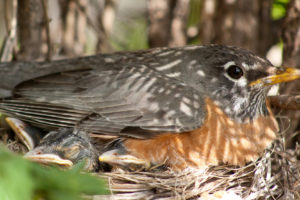Ripples from the Dunes by Nancy Nabak, Communication Coordinator
 It can be said in any language, any accent, and in any culture, and the truth still remains, there’s no place like home.
It can be said in any language, any accent, and in any culture, and the truth still remains, there’s no place like home.
Planet Earth, our precious home, our habitat, is where we gain security, promote learning and growth, and further the continuation of our species line. Everyone and every living thing comes from a home, even single-celled amoebas. Species with a greater numbered cell-count may roam, fly, swim, or take root in larger spaces, but home is where we live best.
Certain forms of life have actually adapted to a dual-residency type of home situation. Some people make their homes in the Midwest during the mild temperatures then head south for the winter – “snowbirds.” Other animals, such as neo-tropical songbirds, will conduct an instinctual migration and fly to their non-breeding residency further south. When nesting season begins to tickle their northward urges, they head back. It’s a complicated but cool phenomenon with no passport necessary.
Soon, very soon, our early migrators will be arriving back home. Reports of Red-winged blackbirds, Sandhill cranes, and Grackles are already coming in. Snowy owls, Common redpolls and crossbills that made it down from Canada this winter will soon be returning to their northern home to start nesting and raising their young.
Every now and then a species may wander or be pushed off its course from its home. Last week, Kennedy Zittel wrote about the Clay-colored sparrow that has been at Woodland Dunes this winter. This bird would normally be in the very southern US or Mexico at this time, but “Clay” didn’t make it home. So, we adopted this feathered cutie. We continue to feed him nourishment. We offer him water and provide shelter. We also love Clay in a way that we understand, but are uncertain if his little birdbrain gets it. Whether or not, Woodland Dunes enjoys being his home.
As we make advances for our human comforts, we may also be forcing adaptations in other species, such as the Chimney swift. Originally, this species made its home from hollowed- out trees in old growth forests. As we logged and cut, these habitats were lost, but the clever swift found a way to adapt to the inside of our chimneys. Unfortunately, this species is once again losing its habitat, where it lives best. Chimneys are no longer being built, and they are either being capped or demolished at a rate that puts this bird’s numbers in peril. Chimneys are this bird’s home and should be preserved.
Unfortunately, there are also times when a species is abruptly displaced from its home. Right now, more than one million Ukranian people have fled their homes because the instinct to live is stronger than staying put. The world-changing Russian invasion has caused a human species displacement where “living best” is not an option or even possible. Although Woodland Dunes is far away, we wish for comfort and secure newfound homes for these people. We honor the love and compassion as strangers from surrounding countries open up their hearts and homes to them. And today, in Two Rivers Wisconsin, we realize how truly blessed we are.
The newly launched James Webb telescope is expected to see what the universe looked like around a quarter of a billion years ago. Ironically, we have the eyes to see, without a telescope, what’s needed for all life right now. A home. A place where we live best.
Photo of robin in nest by Nancy Nabak
